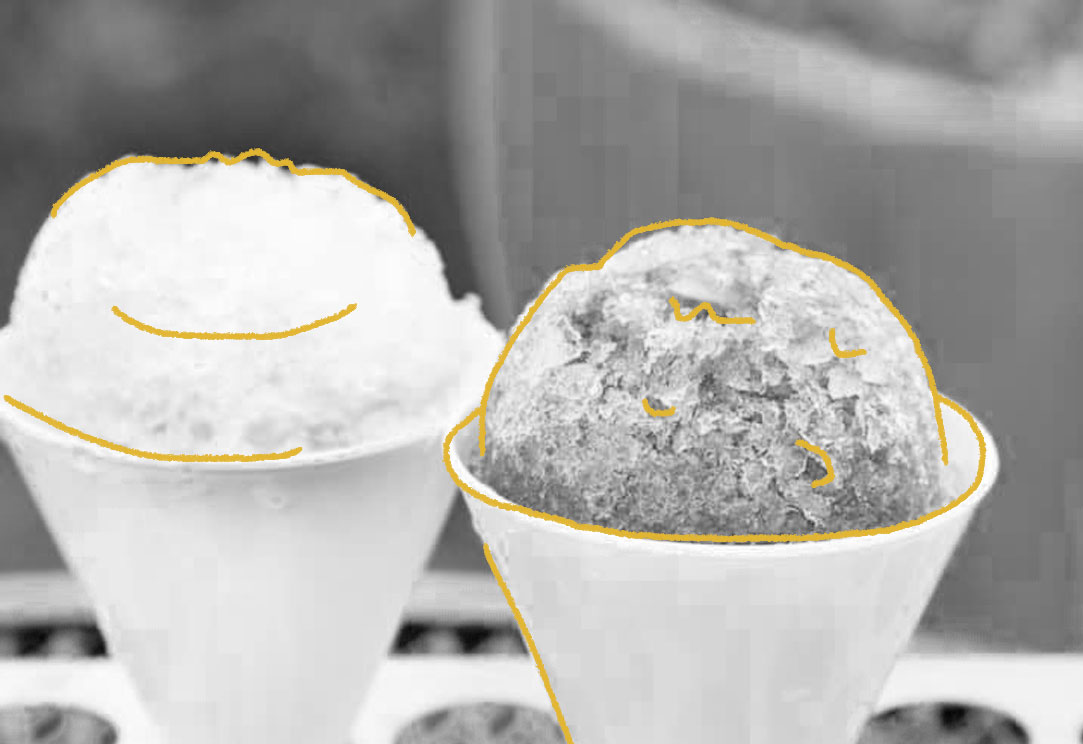In the latter half of the 1800s, the American Industrial Revolution made ice much more readily available than ever before. When ice transport wagons would pass through cities, children would reportedly chase after the wagons to beg for a scrape of ice. Mothers began making their own flavoring for their children to enjoy with their ice scrapes. One of the first popular flavors was apparently made with eggs, vanilla, and sugar. A few decades later, movie theaters introduced hand-shaved ice (essentially an early version of the sno-cone) as a treat to keep movie-goers cool. Several patents for ice shavers were filed around this time. Most significantly, Samuel Bert invented a sno-cone machine in 1919 and sold sno-cones at the State Fair of Texas. Then in 1934, the first ice block shaver was invented in New Orleans. During the Great Depression and War War II, sno-cones became available all across America and quickly gained popularity since they were tasty, yet affordable treats. Today, sno-cones are topped with flavored syrups and are widely enjoyed across America, especially in the summer months. Many different countries also have their own versions of ice-based treats, each with their own unique history. (One popular example is South Korea's patbingsu.) There are even variations within America — for example, Hawaii famously has shave ice and Baltimore is known for its sno-balls, which are similar to sno-cones but are made using a fine, powdery “snow” rather than crunchy ice.

Your go-to guide for weird history facts
Subscribe to the FREE daily email that makes learning about history fun.


